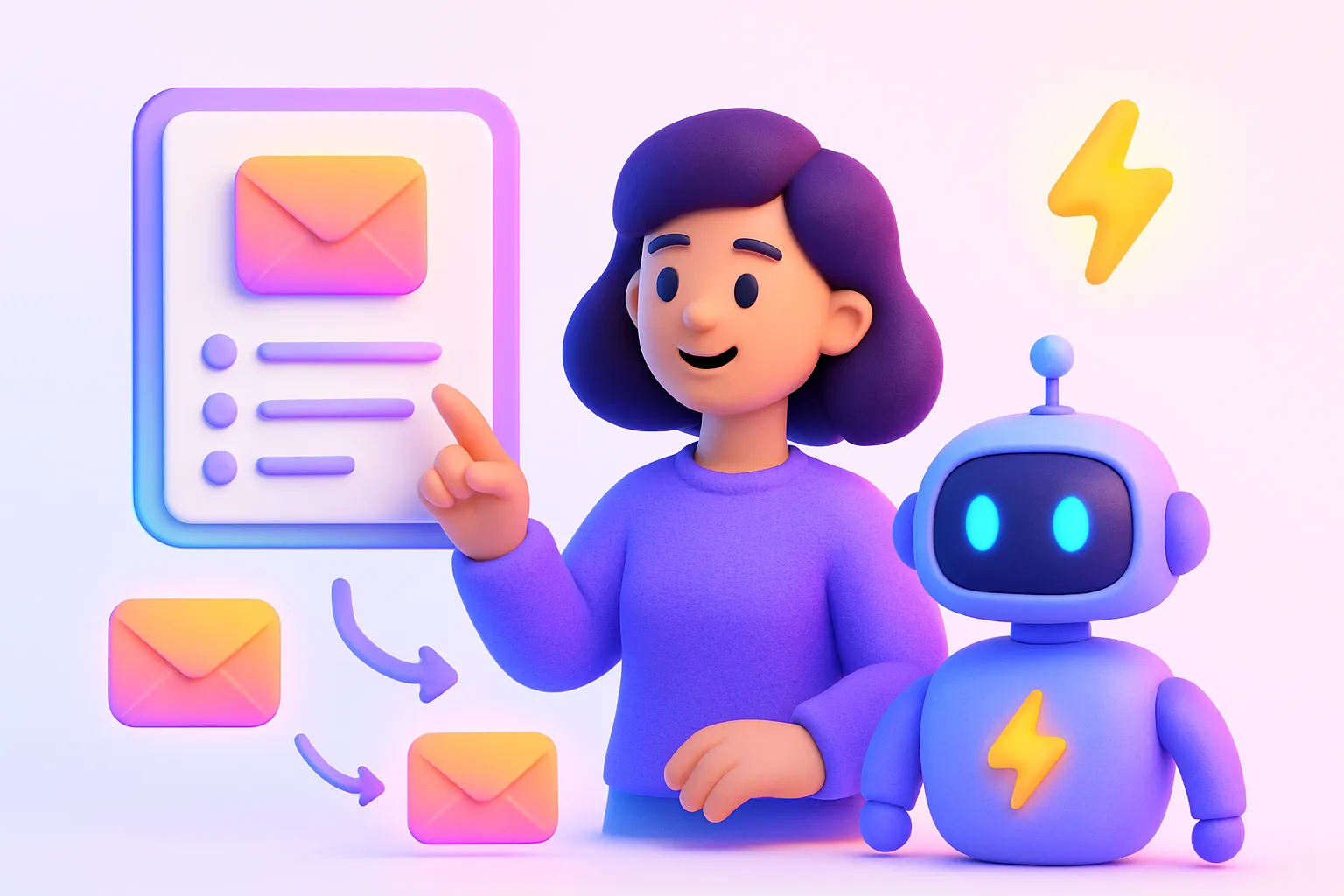Automating Email Sequences with AI: Enhancing Engagement and Efficiency

Introduction to AI in Email Automation
Email still delivers one of the highest returns in digital marketing, but manual list segmentation and batch blasting belong in the past. Artificial intelligence now studies every open, click, and purchase to send each subscriber a message that feels hand-written. According to recent research, AI-driven personalization can lift open rates by 20 percent and conversions by 7 percent. That extra engagement compounds across an entire funnel, turning email from a routine task into a profit engine.
Benefits of AI-Driven Email Sequences
- Hyper-personalization at scale. Algorithms learn from browsing history, purchase data, and even location to send content that matches each reader’s intent.
- Better timing. Predictive send-time optimization lands messages in inboxes when subscribers are most likely to engage.
- Continuous learning. Machine learning models update after every campaign, so each send gets a little smarter.
- Time savings for marketers. Once workflows are set, teams can focus on strategy instead of repetitive scheduling and list management tasks.
- Revenue growth. Brands like Farfetch saw a 38 percent jump in click rates for trigger campaigns after adopting AI case study.
Key Features of AI Email Automation Tools
Not all platforms are created equal. High-performing tools usually include:
- Predictive analytics that forecast churn risk, lifetime value, or next best offer source.
- Automated A/B testing. The system spins up multiple subject lines, CTA buttons, or images and sends winners in real time.
- Natural-language generation. Tools such as Conbase.ai turn spreadsheet rows into personalized drafts for thousands of contacts with one prompt.
- Journey builders that trigger messages based on behavior, not guesswork.
- Compliance safeguards. Built-in GDPR and CAN-SPAM checks keep lists clean and reduce legal risk.
Implementing AI for Personalized Email Campaigns
- Audit your data. AI is only as good as the inputs. Make sure fields like last purchase date, average order value, and product category are accurate.
- Choose one high-impact use case. Cart abandonment or post-purchase upsells often deliver quick wins.
- Build dynamic content blocks. Let the algorithm swap images, copy, and offers based on each user’s profile.
- Set clear KPIs. Track incremental revenue per recipient, not just opens or clicks.
- Iterate. Review performance weekly and feed winners back into the model for continuous improvement source.
Case Studies: Success Stories in AI Email Automation
Farfetch: By layering AI onto its trigger campaigns, the fashion marketplace improved average click rate by 38 percent and scaled product recommendations across regions.
Cosabella: The lingerie brand replaced its email agency with an AI platform and grew email revenue by 60 percent within six months source.
Mid-market retailer: After introducing predictive churn models, the team reduced unsubscribe rates by 15 percent while sending fewer emails overall (source not available).
Best Practices for AI-Powered Email Sequences
- Prioritize data privacy. Collect explicit consent, store data securely, and provide clear opt-out options to stay compliant with GDPR and CAN-SPAM source.
- Maintain data hygiene. Remove inactive addresses and incorrect fields that can skew predictions.
- Blend human and machine. Let AI draft copy, but keep a human editor for tone, brand fit, and empathy.
- Monitor algorithm bias. Review segments periodically to ensure fair and inclusive messaging.
- Test, then test again. Even the smartest model benefits from fresh creative and new hypotheses.
Future Trends in AI and Email Marketing
- Predictive personalization 2.0. Real-time content changes based on live site activity or weather conditions.
- Autonomous email campaigns. Systems that plan, write, and schedule entire sequences with minimal human input source.
- Voice and conversational AI. Smart inbox assistants that read, summarize, and even respond to promotional emails.
- Cross-channel orchestration. Email engines will sync with SMS, push, and in-app messages for a unified customer story.
Related Reading: AI Marketing Beyond Email
If you’re ready to expand automation across every touchpoint, check out our guide on AI-Powered Marketing Automation in E-Commerce. It dives into omnichannel strategies, real-time engagement tactics, and success metrics that complement the email workflows covered here.
Wrapping Up
AI doesn’t replace marketers; it gives them superpowers. By automating email sequences, brands can speak to millions with the relevance of a one-to-one conversation, all while freeing teams to focus on creative strategy. Start with clean data, choose a clear use case, and let the algorithms do the heavy lifting. Your subscribers, and your revenue reports, will thank you.



